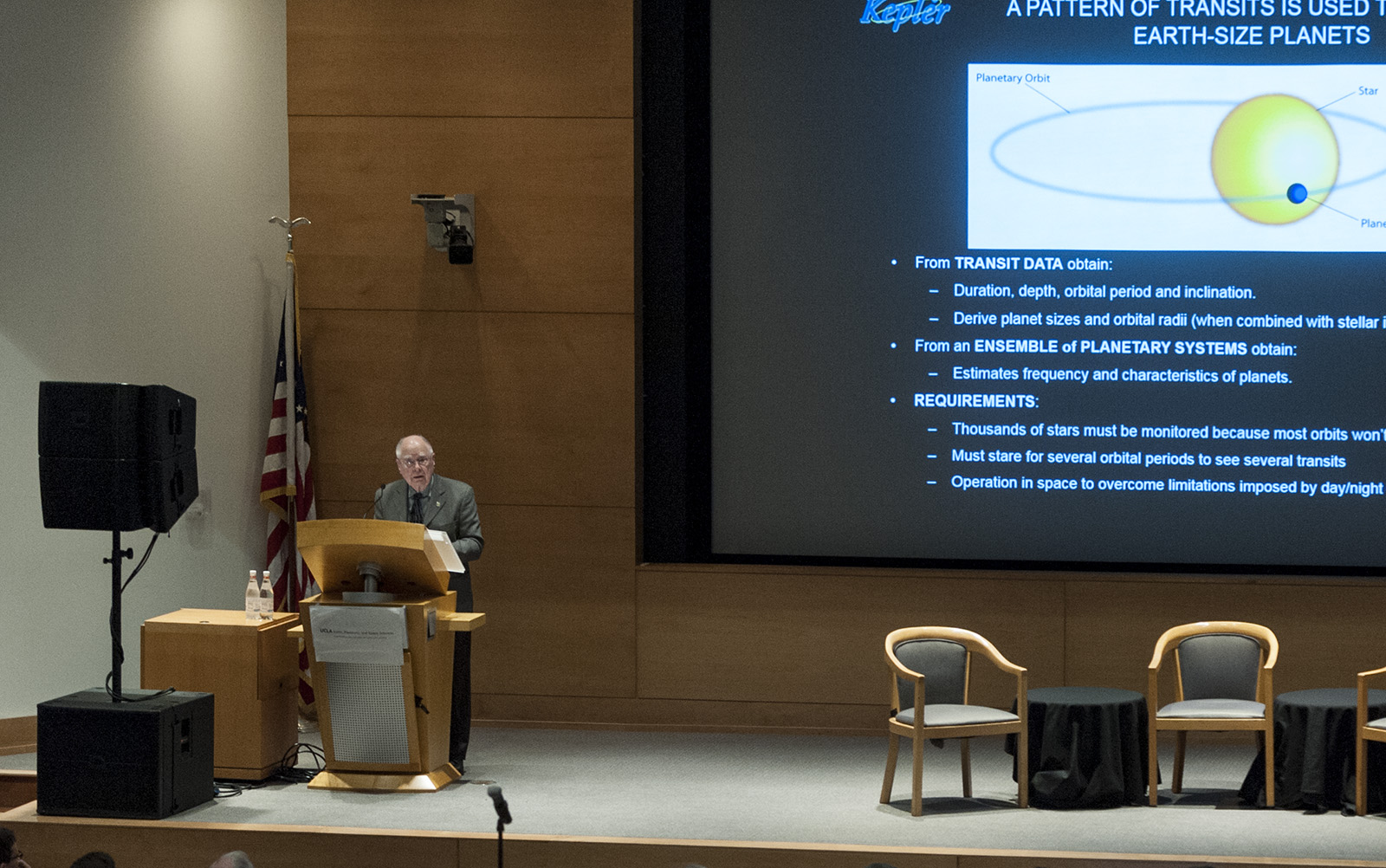NASA leader visits UCLA to share findings of Kepler mission

William Borucki, the principal investigator of NASA’s Kepler Mission, spoke about the mission’s findings and significance Wednesday evening. (Daniel Leibowitz/Daily Bruin)
By Emi Nakahara
April 6, 2017 8:56 p.m.
The UCLA community learned about the possibility of life among 100 billion planets from a NASA mission leader Wednesday evening.
William Borucki, the principal investigator of NASA’s Kepler mission, spoke to about 300 people in an event hosted by the earth, planetary and space sciences department. The NASA Kepler mission, which aims to search for Earth-like planets in the galaxy, has discovered thousands of exoplanets and planetary systems.
“I view (Borucki) as an equivalent to Galileo,” said Jean-Luc Margot, the earth, planetary and space sciences department chair. “He has transformed our view of the universe.”
Borucki said the Kepler telescope is actually a photometer that monitors 170,000 stars continuously to detect changes in starlight.
Unlike other telescopes that take visual pictures of space, Borucki said Kepler detects the blockage of starlight as a planet orbits around the star, which is known as transit data. From transit data, scientists can calculate the orbital period and size of the planet.
The transit data has led to many discoveries about solar systems. Researchers involved in the mission have found double-star solar systems, Jupiter-sized planets with the density of styrofoam and billions of Earth-sized planets, Borucki said.
Borucki said Kepler mission discoveries have raised questions about the possibility and nature of extraterrestrial life on other planets. He said his favorite planet, Kepler-22b, may have oceans of water at suitable temperatures and may yield a viable atmosphere for living organisms.
Srinivas Prasad, a doctoral student in electrical engineering, said he became interested in the search for life on other planets after attending a class by Margot on extraterrestrial life. He decided to attend Borucki’s talk to learn more.
“I think intelligent life on other planets might exist,” Prasad said. “It’s a nonzero probability.”
Borucki also talked about an anomaly from Kepler’s transit data that suggests intelligent extraterrestrial life. Kepler detected a significant decrease in light from a star, caused by something much larger than an orbiting planet. Borucki said scientists do not know what the object is, but it could be a large amount of comets or an alien megastructure.
Borucki added that NASA plans to continue Kepler’s search for Earth-like planets. The New Worlds telescope, which can focus directly on planets rather than transit data, will block out starlight to more closely monitor planets’ atmospheres, oceans and other signs of possibility for life.
“If we were alone in the universe, think how bad that would be,” Borucki said. “There would be no ‘Star Trek,’ no place to go to.”


